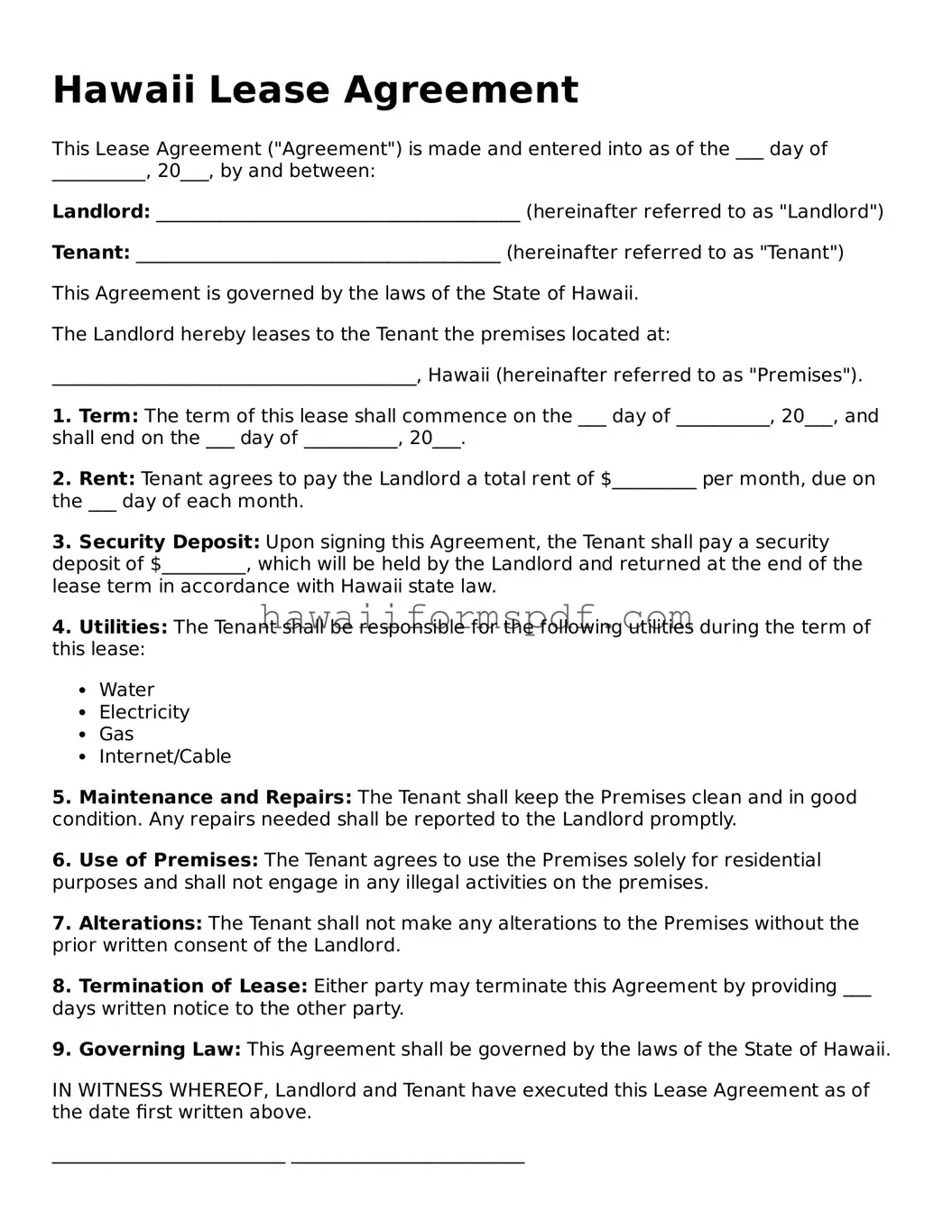Hawaii Lease Agreement
This Lease Agreement ("Agreement") is made and entered into as of the ___ day of __________, 20___, by and between:
Landlord: _______________________________________ (hereinafter referred to as "Landlord")
Tenant: _______________________________________ (hereinafter referred to as "Tenant")
This Agreement is governed by the laws of the State of Hawaii.
The Landlord hereby leases to the Tenant the premises located at:
_______________________________________, Hawaii (hereinafter referred to as "Premises").
1. Term: The term of this lease shall commence on the ___ day of __________, 20___, and shall end on the ___ day of __________, 20___.
2. Rent: Tenant agrees to pay the Landlord a total rent of $_________ per month, due on the ___ day of each month.
3. Security Deposit: Upon signing this Agreement, the Tenant shall pay a security deposit of $_________, which will be held by the Landlord and returned at the end of the lease term in accordance with Hawaii state law.
4. Utilities: The Tenant shall be responsible for the following utilities during the term of this lease:
- Water
- Electricity
- Gas
- Internet/Cable
5. Maintenance and Repairs: The Tenant shall keep the Premises clean and in good condition. Any repairs needed shall be reported to the Landlord promptly.
6. Use of Premises: The Tenant agrees to use the Premises solely for residential purposes and shall not engage in any illegal activities on the premises.
7. Alterations: The Tenant shall not make any alterations to the Premises without the prior written consent of the Landlord.
8. Termination of Lease: Either party may terminate this Agreement by providing ___ days written notice to the other party.
9. Governing Law: This Agreement shall be governed by the laws of the State of Hawaii.
IN WITNESS WHEREOF, Landlord and Tenant have executed this Lease Agreement as of the date first written above.
_________________________ _________________________
Landlord Signature Tenant Signature
_________________________ _________________________
Printed Name Printed Name
